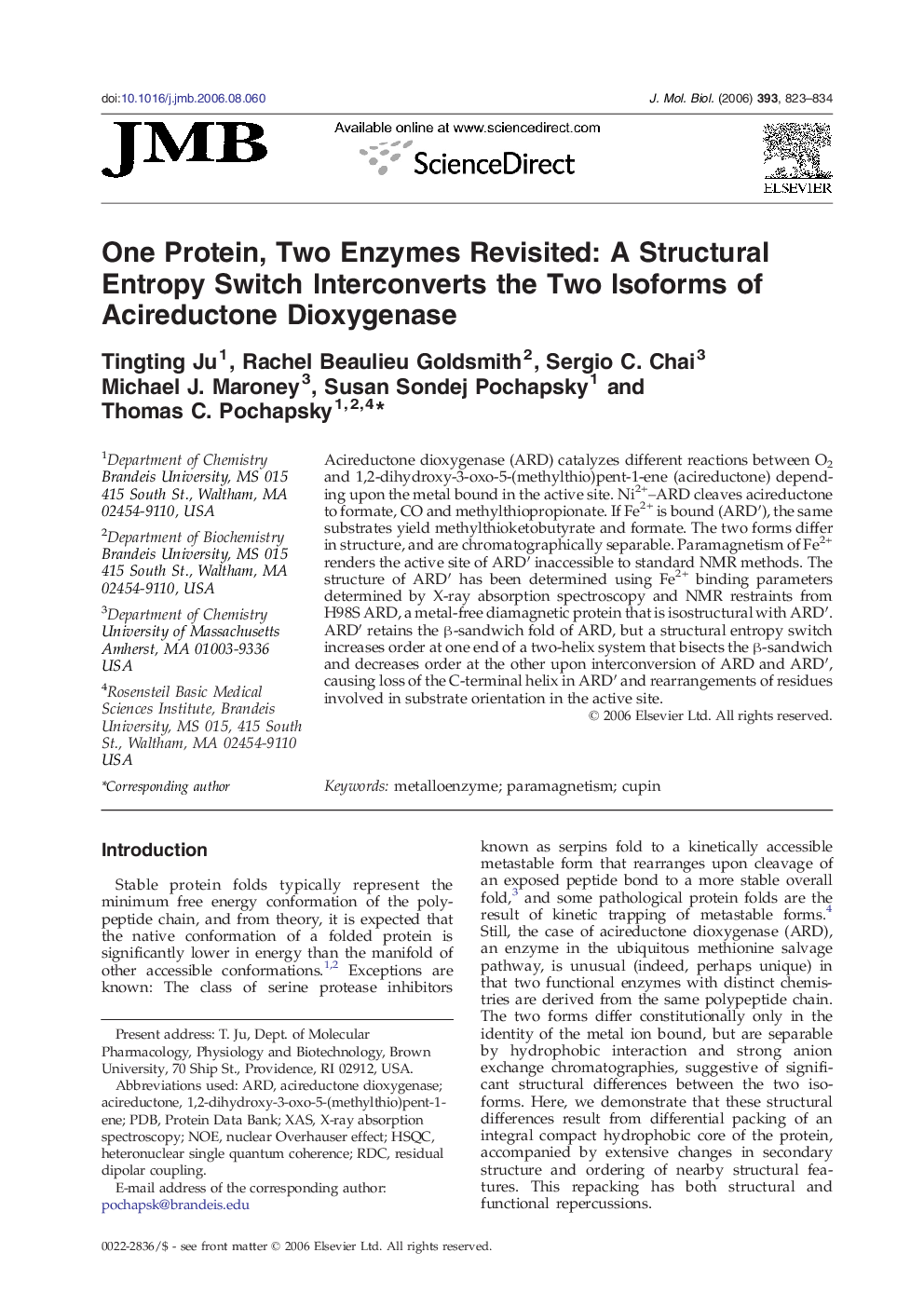| Article ID | Journal | Published Year | Pages | File Type |
|---|---|---|---|---|
| 2188697 | Journal of Molecular Biology | 2006 | 12 Pages |
Acireductone dioxygenase (ARD) catalyzes different reactions between O2 and 1,2-dihydroxy-3-oxo-5-(methylthio)pent-1-ene (acireductone) depending upon the metal bound in the active site. Ni2+–ARD cleaves acireductone to formate, CO and methylthiopropionate. If Fe2+ is bound (ARD′), the same substrates yield methylthioketobutyrate and formate. The two forms differ in structure, and are chromatographically separable. Paramagnetism of Fe2+ renders the active site of ARD′ inaccessible to standard NMR methods. The structure of ARD′ has been determined using Fe2+ binding parameters determined by X-ray absorption spectroscopy and NMR restraints from H98S ARD, a metal-free diamagnetic protein that is isostructural with ARD′. ARD′ retains the β-sandwich fold of ARD, but a structural entropy switch increases order at one end of a two-helix system that bisects the β-sandwich and decreases order at the other upon interconversion of ARD and ARD′, causing loss of the C-terminal helix in ARD′ and rearrangements of residues involved in substrate orientation in the active site.
